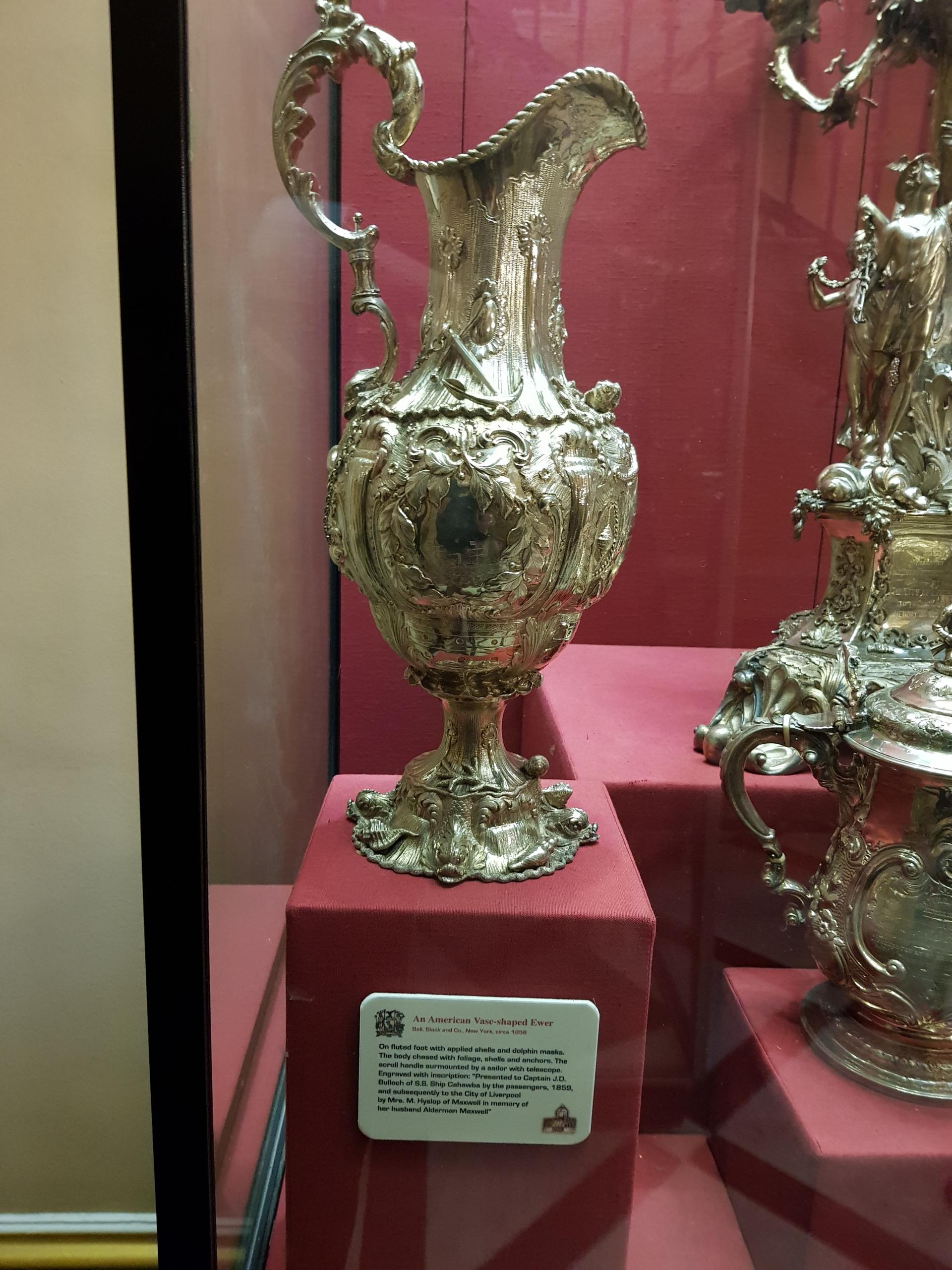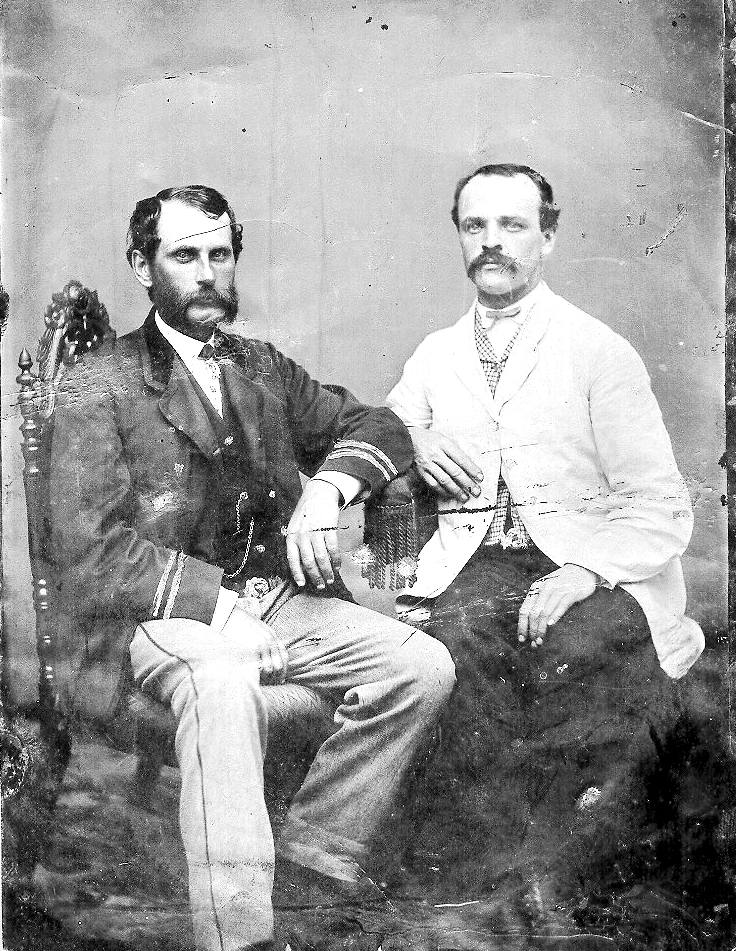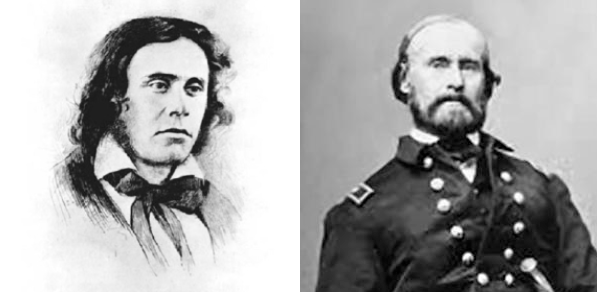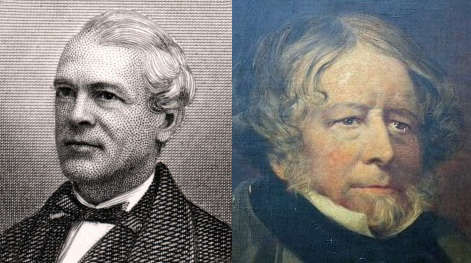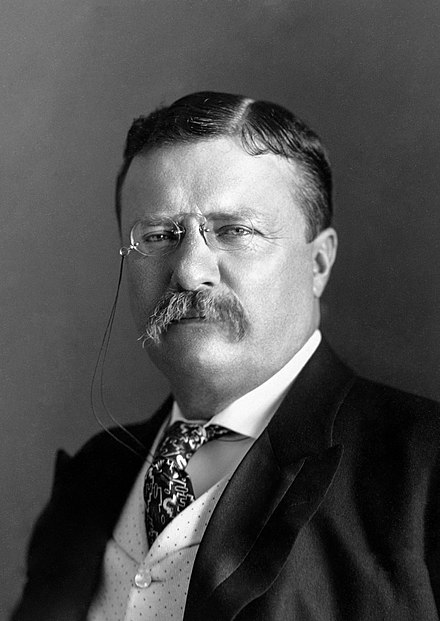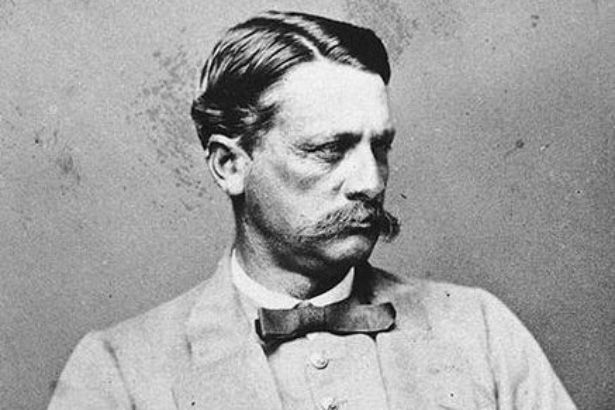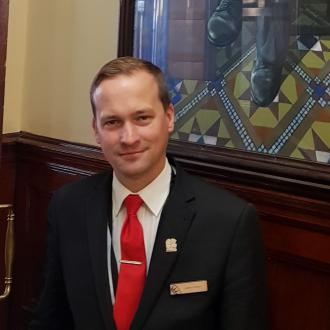City Halls Tour Guide, James O’Keeffe, gives us a fascinating historic insight towards Liverpool Town Hall and the American Civil War…
This beautifully decorative American Vase shaped Ewer in Liverpool Town Hall’s silver collection is a link to the American Civil War. It was presented to the City of Liverpool by Mrs M. Hyslop of Maxwell in memory of her late husband Alderman Maxwell but, as its inscription explains, it was originally presented to Captain J.D. Bulloch of S.S. Cahawba by the passengers, in 1859.
Captain James Dunwoody Bulloch (left) with his younger half-brother, Irvine Bulloch, c. 1865.
J.D. Bulloch was James Dunwoody Bulloch (1823-1901), Mrs Hyslop of Maxwell’s father. For 15 years, he had served in the American Navy but, to fit in more with family life (he was to have five children), he left the navy in 1854 and worked for a private steamship company (New Orleans Steamship Co.). He became the captain of the SS Cahawba, a 1,643 ton side wheel steamer, which sailed regularly from New York to Havana and New Orleans. Bulloch became very well known in his work and was even written about by the poet Henry Howard Brownell, who dedicated the poem, The Burial of the Dane, to him. The author, Richard Henry Dana, also wrote about him in his book, To Cuba and Back: A Vacation Voyage.
Author, Richard Henry Dana, and Poet, Henry Howard Brownell.
The American Vase shaped Ewer was given to Bulloch on one of his last voyages on the Cahawba as he took command of a new ship, the DeSoto, in June 1859.
In 1861, when the American Civil War broke out, Bulloch offered his professional services to the Confederacy, arguing that he was Georgia-born and his loyalties were with the South.
The American civil war of 1861 – 1865 was the country’s bloodiest conflict and resulted in the deaths of more than 620,000 people. The war was fought between the Northern States (Union) and the Southern States (Confederate States). Although America is geographically a great distance from Liverpool, the city has various links to the war itself. Indeed, in the classic film Gone With the Wind, Rhett Butler remarks, “My funds are in Liverpool, not in Atlanta” referring to the Confederate States’ financial ties with our city.
Liverpool’s reliance on overseas trade, particularly cotton, ensured that the town had a great deal of sympathy with the Confederate States’ cause. The outbreak of the conflict had a serious financial impact on Liverpool; of all of the cotton produced in the Confederate States, 60% of it came through Liverpool by 1861, and the Northern States’ blockade of Confederate trade brought it to a standstill.
A plaque signposting the Bulloch house at 10 Rumford Place, Liverpool.
Just around the corner from Liverpool Town Hall is Rumford Place. It was here that South Carolina-born businessman and politician George Alfred Trenholm, through his company, Fraser, Trenholm and Co., provided Confederate banking facilities and controlled the financing of its war effort, alongside his Liverpool-based partner Charles Kuhn Prioleau.
George Alfred Trenholm (image credit: housedivided.dickinson.edu) and Charles Kuhn Prioleau (image credit: American Civil War Society).
James Dunwoody Bulloch was sent to Liverpool and worked with Prioleau to procure warships for the Confederate navy. These ships would work to break the Union’s blockade and allow the Confederacy to export cotton to be sold in Britain which would, in turn, help them to fund the war. Of course, as Britain was a neutral country in the conflict, it was illegal under British law for companies to supply armed war vessels to warring factions. Bulloch, therefore, had to act in secrecy, becoming a Confederate secret agent.
Bulloch, described in 1861 as “the most dangerous man (that) the South have”, was successful in purchasing 12 warships (although, seven of these were seized by Union agents). The most successful of these ships was the CSS Alabama, built in 1862 in Birkenhead by John Laird Sons and Co. The Alabama was a commerce raider, designed to attack commercial and naval ships. Over two years, the Alabama successfully took more than 60 Union ships. The ship was finally stopped when it was sunk off the French coast during the Battle of Cherbourg in June 1864.
The financial cost of CSS Alabama’s exploits to the Union was over $4,000,000 in goods and shipping. The success of this one ship and the fact that it was constructed by a British firm (thereby, violating Britain’s neutrality in the American Civil War) had serious financial repercussions, consequentially affecting its relations with the United States of America. After an arbitration in 1872 supported America’s claim that Britain had violated neutrality by allowing five Confederate warships to be built, Britain paid $15,500,000 to the United States in damages and signed a new treaty with the country.
At the end of the Civil War in 1865, amnesty proclamations were announced by the President of the United States, Andrew Johnson, which gave a pardon and a restoration of rights to those who had participated in the ‘rebellion’ of the Confederate states. However, this amnesty did not stretch to Bulloch because of his actions during war, and so, he remained in Liverpool working as a cotton broker.
Bulloch’s family included future president of the United States, Theodore Roosevelt. Roosevelt, the son of Bulloch’s half-sister, Martha, actually visited his “Uncle Jimmy”, as he called him, in Liverpool on three occasions.
Captain J.D. Bulloch’s half-nephew, Theodore Roosevelt, would go on to become the 26th President of the United States.
Bulloch’s daughter, Jessie (1860-1941), married Maxwell Hyslop Maxwell, who was a successful Liverpool merchant. They had a long, happy marriage of 49 years, and it was at Maxwell’s home – 76 Canning Street, Liverpool – where Bulloch died in 1901. He was 77 years old. He was interred at Toxteth Cemetery and his headstone included the inscription: “An American by birth, an Englishman by choice”.
Alderman Maxwell Hyslop Maxwell C.B. C.B.E. (1862-1937) was the director of his family’s company, W. A. and G. Maxwell and Co. Ltd, which had interests in the Caribbean, and in the tobacco, rum, coffee and spices trades. He was also a director of the Cunard Company, Royal Insurance Company and the Overhead Railway Company. He became a Conservative councillor in 1892 and remained on the council until his death. He became an alderman in January, 1901.
He also served as the chairman of the Liverpool Watch committee for 37 years. When he died, he was the most senior Watch Committee Chairman in the whole of Great Britain.
As an Alderman of the council, Maxwell became the “father” (or the oldest sitting member) of the council.
He and his wife (as well as his wife’s younger sister Martha) would go on to live at the Adelphi Hotel in their later years. Maxwell died aged 75 on 26 October 1937. In his will, he left more than £19,000 to his widow Jessie (nearly $2m in today’s money). Jessie died in 1941. It was reported by the Liverpool Echo on Wednesday 21 June 1939 that the Maxwell family still had the original contract of the Alabama, as well as its flag, in in their possession.
The very last act of the American Civil War took place on 6th November 1865, when James Waddell, Captain of CSS Shenandoah (one of Bulloch’s ships, which had successfully attacked many Union whaling vessels), took a letter of surrender to Liverpool Town Hall.
Captain James Waddell committed the last act of the American Civil War at Liverpool Town Hall.
In August 1865, when Waddell came across a British freight ship called the Barque Barracouta, the officers told him that the war was over, and that going back to the United States would probably mean being put on trial as pirates.
To avoid this, Waddell sailed to Liverpool and, 130 days later on the 6th November, they arrived in the Mersey. He surrendered the ship to the HMS Donegal and then walked into the Town Hall and handed his letter of surrender to the Mayor of Liverpool, John Farnworth. So, the Mayor of Liverpool was the first person to know about the very end of the American Civil War!
We hope you enjoyed this historical insight into Liverpool Town Hall and the American Civil War. While we are still currently restricted under the terms of lockdown, our Guided Tours will return in future, so you can find out even more about the Town Hall’s history and heritage.
Keep updated with future Guided Tour announcements via our Facebook, Twitter and Instagram pages.
About James O’Keeffe
James works as one of the official guides of Liverpool’s City Halls. He has worked in his role for 12 years and delivers a wide range of tours in St George’s Hall and Liverpool Town Hall, including the monthly guided tours, St George’s Hall Film tours, Footman tours and the special ‘Walk the Floor’ tours during the Minton Floor Reveal.
He also helps to animate events in the buildings including the traditional Toasting of the Haggis at the Burns Night Ceilidh and Dickens Readings in St George’s Hall’s Concert Room.
With a Master’s Degree in History, James’s passion is British history with a particular interest in all things Liverpool.
